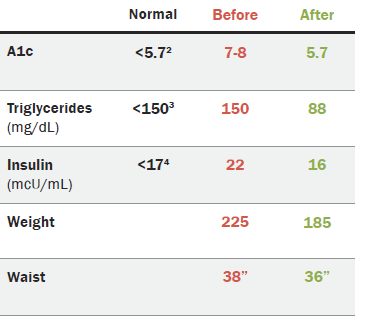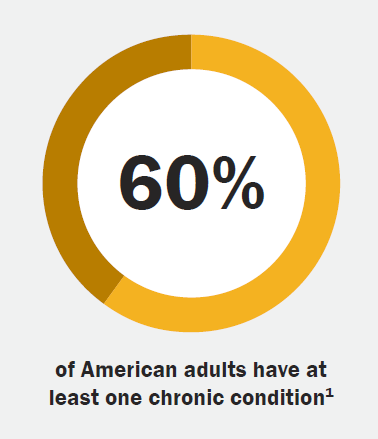A health coaching and chronic disease success story

LAZ Parking’s whole-person approach to health benefits is changing lives. Here is one individual’s story.
The “why?”
LAZ Parking is one of the largest parking companies in the United States with operations spanning 39 states from Connecticut to California. Such a large business requires a lot of people to keep things running smoothly, and LAZ employs nearly 14,000 hard-working individuals to do it. Being a people-first organization, LAZ recognized that each individual’s health and wellbeing has a direct impact on the company’s wellbeing, including important business outcomes.
The “how?”
LAZ partnered with WellSpark to help deliver the best whole-person health and wellness resources for the company’s greatest asset. To best support its population, LAZ opted for a combination of two of WellSpark’s programs, Health Coaching for Life and Help364. Both programs include one-on-one support to help individuals unlock personal barriers to change, one led by Health Coach Educators and one led by Nurse Wellness Coaches. They paired these coaching programs with a compliance-based incentive program for employees, along with proactive outreach to individuals to get them engaged.
The (phenomenal) result
Wellness is not a one-size-fits-all experience and one LAZ employee leaned in to coaching and the wellbeing resources offered by LAZ, leading to positive and impactful results. If the success of this partnership between WellSpark and LAZ is measured by an individual’s numbers, the data tells an incredible story.

At the start of the coaching relationship, the participant had multiple chronic disease diagnoses, including Coronary Artery Disease, Hypertension, Hyperlipidemia and Type 2 Diabetes. He had a blood pressure of 130/90, A1c in the 7-8 range, morning blood sugars that ranged from 120-130 and nighttime blood sugars that ranged from 100-120. Additionally, he was unhappy with his endocrinologist, felt that his diabetes was not well-controlled and was taking eleven different medications and supplements. The participant’s initial goal was to lose 10 pounds and reduce the number of medications being taken.
For more than 16 months, the participant met with a WellSpark Health Coach Educator every 2-3 weeks. During their time together, they worked to increase his physical activity, reduce food portions and change his eating habits. The coach also assisted the participant in finding a new endocrinologist.
At his last recorded check-in, the participant had lost 40 pounds and two inches from his waist, requiring an entirely new wardrobe. What’s even more impressive is that his A1c was at 5.7. Dr. Wayne Rawlins, Chief Medical Officer at WellSpark, explained the significance of this number: “A hemoglobin A1c of less than 6.2 means there is no evidence of diabetes, a hemoglobin A1c of 5.7 means there is no evidence of pre-diabetes. So, this is a participant with diabetes, with an elevated hemoglobin A1c, who with coaching interventions and intervention of his endocrinologist has a hemoglobin A1c which is normal.” Not only did the participant decrease his risk of diabetes-related complications, greatly improve his diabetes management and decrease his medications, he put himself on a path to reversing diabetes-related issues and its overall impact.
But, this participant didn’t stop there – after achieving such amazing results and reporting a significant reduction in stress, he adjusted his goal and continued to meet with his health coach to work towards eliminating medications completely.
The impact to LAZ
When evaluating the employer benefits of employee wellbeing initiatives, Return on Investment (ROI) often becomes part of the conversation. WellSpark measures Future Cost Avoidance (FCA). Working with emerging risk within a workforce, WellSpark’s primary objective is to keep people out of the “sick care” system by helping employees make lifestyle and behavior changes that improve their overall wellbeing, leading to avoidance of future costs. Hence, FCA vs. ROI.
According to the National Association of Chronic Disease Directors, the average annual spend for one employee with at least one chronic condition is $6,032.1 WellSpark’s intervention demonstrates a potential avoidance of this expense in the future.

Since 60% of American adults have at least one chronic condition1 there is significant opportunity to impact bottom-line results, especially with a workforce of LAZ’s size. If LAZ were to affect this kind of change with even a small percentage of the employees enrolled in their health plan, there is potential to save millions in future cost. Helping employees find a path to wellbeing is good business. Learn how WellSpark helps employers improve the health of their workforce through employee support — individual, group and text — focused on removing barriers that prevent lasting change.
Sources:
1National Association of Chronic Disease Directors (2022). Commentary on Chronic Disease Prevention in 2022. Retrieved February 12, 2023, from www.chronicdisease.org/commentary-chronic-disease-prevention-2022-david-hoffman/ 2Center for Disease Control and Prevention (2023). All About Your A1c. Retrieved February 12, 2023, from www.cdc.gov/diabetes/managing/managing-blood-sugar/a1c.html# 3Mayo Clinic (2023). Triglycerides: Why do they matter? Retrieved February 12, 2023 from www.mayoclinic.org/diseases-conditions/high-blood-cholesterol/in-depth/triglycerides/art-20048186# 4University of Rochester Medical Center (2023). Total and Free Insulin (Blood). Retrieved February 12, 2023 from ww.urmc.rochester.edu/encyclopedia/content.aspx?contenttypeid=167&contentid=insulin_total_free#
Disclaimer: Any testimony or examples are not intended to guarantee that an organization or individual will achieve the same or similar results. Each organization’s or individual’s success depends on many factors.